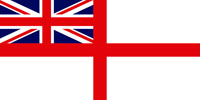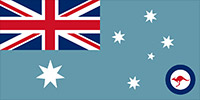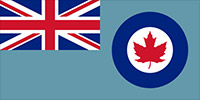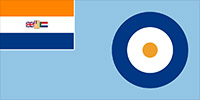 |
 |
 |
 |
 |
 |

RAF No 62 Squadron
RAF No 62 Squadron
Motto: Insperato (Unexpectedly)
Formed on 8 August 1916 at Filton from a nucleus provided by No 7 Training Squadron, it spent the following year as a training unit before receiving Bristol F2Bs in May 1917. However it was January 1918 before the squadron moved to France, where it carried out fighter-reconnaissance duties until the end war. Following duty with the occupation forces, it disbanded at Spich in Germany on 31 July 1919.
The squadron reformed in the day bomber role on 3 May 1937 when 'B' Flight of No 40 Squadron at Abingdon was raised to squadron status. Initially equipped with Hinds, it began to receive Blenheim Is in February 1938 and in August 1939 these where taken to Singapore. here the squadron flew training missions interspersed with coastal patrols. Having moved to Butterworth in Malaya in early December 1941, the squadron carried out attacks against Japanese shipping and airfields during the invasion. However, having lost most of its aircraft in enemy attacks against its airfields, it re-equipped with Hudsons in January 1942 and moved to Sumatra. As the Japanese advance continued the squadron withdrew to Burma, absorbing what remained of No 139 Squadron and continued to carry out attacks on enemy airfields and shipping.
In May 1943, the squadron was withdrawn to India, where it began converting to the transport role, equipped with Dakotas. It was now mainly involved in supply dropping operations to the 14th Army in Burma and these continued until the end of the war. After the war it changed over to general transport duties throughout South-East Asia Command until disbanding at Mingaladon on 15 March 1946. Nearly six months later, No 76 Squadron at Mingaladon was re-numbered No 62 on 1 September, again equipped with Dakotas.
It moved to India in March 1947 as a cadre, but having been brought back up to full strength, was disbanded on 10 August 1947. A further spell as a Dakota equipped transport squadron began on 8 December 1947 when it reformed at Waterbeach. It had been reformed to work on the Berlin Airlift and following its successful conclusion, the squadron disbanded again on 1 June 1949. Its final incarnation was from 1 February 1960 to 31 January 1963 as a Bloodhound surface-to-air missile unit at Woolfax Lodge.
First World War
No. 62 Squadron was equipped with Bristol F.2b Fighters in 1917.[2], Gloucestershire on 8 August 1916 from elements of No. 7 Training Squadron.[2] The unit received Bristol F2B fighter aircraft in May 1917 and was deployed to France in January 1918 with operations commencing from the aerodrome at Serny in early 1918.[3] The squadron operated as fighter-reconnaissance unit until disbanding on 31 July 1919.[4]
The first victory for the squadron was credited on 21 February 1918 near Armentières, Nord, France.[3] Nicknamed "The Cheery 62s," the unit had its first encounter with Manfred von Richthofen's Circus on 12 March 1918, resulting in at least two aviators killed, four captured, and one wounded.[3] No. 62 Squadron was one of the last two Bristol F.2 Fighter squadrons to serve at the Western Front, the other being No. 88 Squadron. The aircraft of both squadrons often escorted de Havilland planes on bombing missions.[3] By the end of the war, No. 62 Squadron was credited with 76 enemy aircraft destroyed and 85 driven out of control.[5] Ten aces served in the unit, including future Air Vice-Marshal William Ernest Staton as well as George Everard Gibbons, Thomas L. Purdom, Geoffrey Forrest Hughes, Thomas Elliott, Charles Arnison, Ernest Morrow, William Norman Holmes, Hugh Claye and Douglas Savage.[6] The Squadron's victories came at a high price as 28 of its aviators were killed in action and three killed in accidents. In addition, 32 aviators became prisoners of war, 22 were wounded in action, and eleven sustained accidental injuries.[6] This does not compare favorably with No. 88 Squadron, the last Bristol Fighter unit to reach the front. While that squadron was credited with 147 enemy aircraft destroyed, it only had two aviators killed, five wounded, and ten reported missing.[6]
Revived for the Second World War
On 3 May 1937, the squadron was reformed at Abingdon from 'B' Flight of No. 40 Squadron, equipped with Hawker Hinds.[4] In February 1938 the squadron re-equipped with Bristol Blenheims.[7] The squadron was posted to Singapore in August 1939 and moved to Alor Star in northern Malaya in February 1940.[8] Japan invaded Malaya on 8 December 1941 and the squadron was evacuated to Butterworth on 9 December.[9] Later that day, an attack on Singora airfield was planned, but Butterworth was attacked by Japanese aircraft when the British force was preparing to take off, with only one Blenheim, piloted by Squadron Leader Arthur Scarf of 62 Squadron getting away, carrying out a single-handed attack on Singora. His Blenheim was heavily damaged by Japanese fighters and anti-aircraft fire, badly injuring Scarf. Despite his injuries, he managed to make a forced landing at Alor Star, saving the rest of his crew. He died in hospital that evening. Scarf was eventually posthumously awarded the Victoria Cross for his actions that day.[10][11] Butterworth was heavily damaged by the Japanese attack on 9 December, and the squadron moved again, this time to Taiping, Perak.[12] It withdrew again on 19 December, this time to Singapore.[13] Losses, mainly from Japanese attacks on its airfields were heavy, and the squadron re-equipped with Lockheed Hudsons and moved to P2 airfield near Palembang, Sumatra in January 1942.[14][15] Six 62 Squadron Hudsons took part in attacks against Japanese troopships landing at Endau, Malaya on 26 January, two being shot down by Japanese Ki-27 fighters.[16] The squadron was evacuated from P2 to Java when Japanese paratroops landed at Palembang.[17] The squadron operated closely with those of No. 1 Squadron RAAF,[2][18] before being disbanded on 20 January 1942, its remaining Hudsons being transferred to 1 Squadron RAAF.[19]
On 30 April 1942, the squadron reformed when No. 139 Squadron, equipped with Hudsons and based at Calcutta was renumbered. The squadron was a General Reconnaissance unit, flying coastal reconnaissance and anti-submarine patrols off the coast of Burma.[20] On 18 August, one of the squadron's Hudsons drove off a Japanese flying boat attacking the merchant ship SS Itinda.[21]
From January 1943, the squadron concentrated on bombing missions rather than the maritime mission which it had previously. In May that year, it withdrew from front line operations as its Hudsons were modified for the transport role, while in November, before becoming operational, it re-equipped with Douglas Dakotas.[20][22] The squadron flew in support of British and Commonwealth forces during the Battle of the Admin Box in February 1944[23] and of Operation Thursday, the second Chindit operation in March.[20] It was heavily deployed in dropping supplies during the Battle of Imphal, continuing to fly through the heavy rains of the Monsoon season.[24] The squadron was withdrawn for operations for rest in August 1944, returning to supply dropping in November, continuing these duties and more general transport flying until the end of the war in August 1945.[20] The squadron disbanded on 15 March 1946 at Mingaladon, near Rangoon (now Yangon), Burma.[14]
Squadron Codes used: -
62 May 1937 - Nov 1938
JO Nov 1938 - Sep 1939
PT Sep 1939 - Feb 1942
 Editor for Asisbiz: Matthew Laird Acred
Editor for Asisbiz: Matthew Laird Acred
If you love our website please add a like on facebook
Asisbiz has been running since July 2006 and can continue to run with your kind help!
Please donate so we can make this site even better !!